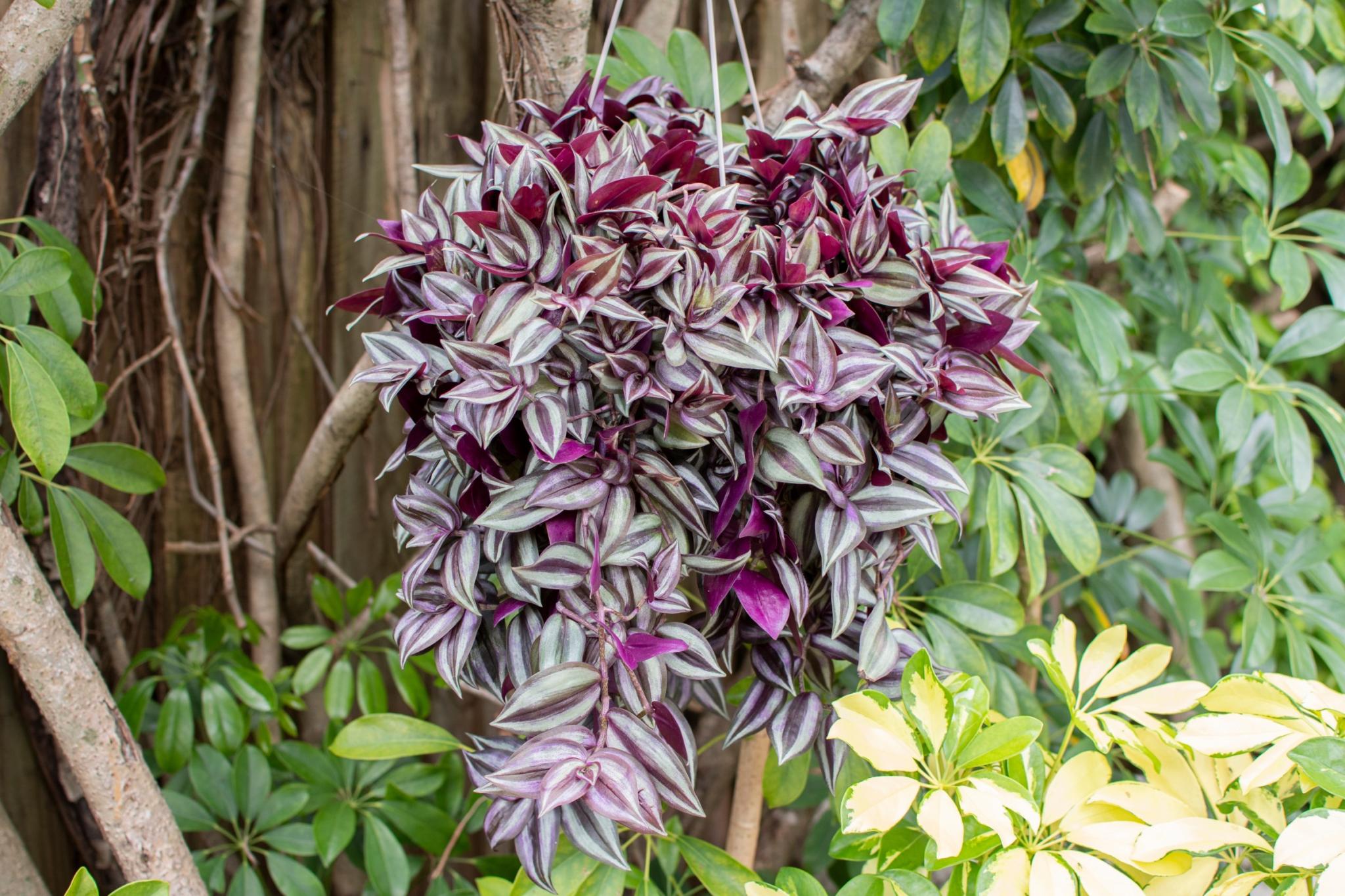
A fast grower and easy-care houseplant
The Almanac Garden Planner - Use It Free for 7 Days!
Plan your 2025 garden with our award-winning Garden Planner.
There are several types of popular inch plants:
- Tradescantia zebrina ‘Silver Inch Plant’ has beautiful purple and green variegated leaves with shiny silver stripes.
- T. pallida ‘Purple Heart’ has fuzzy, purple foliage instead of green!
- T. fluminensis ‘Quicksilver’ has variegated white-green foliage and sometimes produces white flowers.
- T. nanouk is a newer inch plant cultivar (patent in 2017) and has pretty pink, green, and white multicolored streaked leaves—it has become quite trendy!
ADVERTISEMENT
I took a couple of cuttings and placed them in water as advised but none of them have sprouted roots but they are growing new leaves on the stem under water. I'm wondering where I have gone wrong...
I'm going to try to start this plant from seed. But the seeds came with no sowing instructions. Does anyone know how to sow this plant from seed?
This plant was almost entirely dead when we moved this early summer. I hung it outside and trimmed it back severely; I threw the discarded vines in the bushes. I was surprised when the plant recovered quickly, and even more so when I happened upon the vines I had dicarded - they had made a lovely ground cover there!
Saw this beauty in an atrium of a university campus bldg. Broke off a piece and put it in my pocket till home, hours later. Put in water and saw roots within two days. It was so easy to make new starts, that I've been giving them as gifts. Have about 10 generations of starts in North kitchen window. They seem to strive for the light. I water often, but don't worry if I miss a few days. They are the easiest plant. Want to put outside as groundcover, eventually. Have plenty to experiment with, in regards to location. Could do without the wandering Jew name. trandescantia zebrina formerly Zebrina pendula is much more fitting for this lovely plant
I only had one small vine survive a move. Once it is bigger and stronger if I cut and root the end of it will the original vine I took the cutting from still grow? Such a lonely sad single vine.
Mine also got so big and heavy! The plant was in hanging basket and the thing pulled the hook out and plant slammed to the ground. I was gone for 4 days and my husband just flipped the plant back in pot and put outside( in to much all sunlight. I lost most of the plant only have a few good vines left seem to be dying quickly! What do I do??
It would be a better idea to just wait for the remaining vine to put out new “branches,” which should appear from the base of the plant. It will fill out again with time and proper care!











